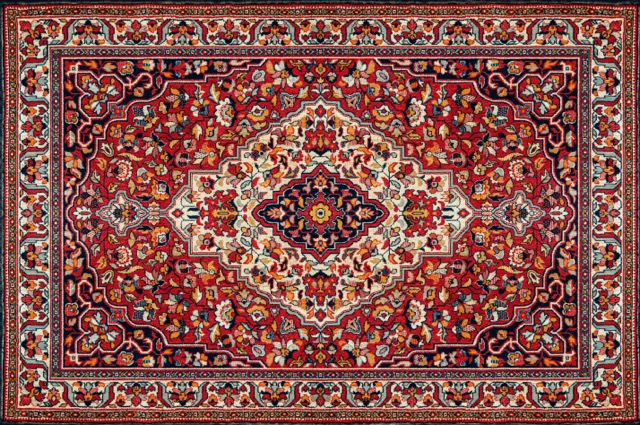Mithraism, often overshadowed by more prominent ancient religions, emerged in the context of late antiquity as a significant mystery religion. Originating in ancient Persia, it captivated followers across the Roman Empire and left an indelible mark on religious thought and cultural practices. The worship of Mithras, a sun god associated with light and truth, offers a fascinating glimpse into the spiritual landscape of the era. In this article, we will explore the origins, beliefs, practices, and eventual decline of Mithraism, as well as its lasting impact on modern religion.
The Origins of Mithraism in Ancient Persia and Beyond
Mithraism’s origins can be traced back to the early Indo-Iranian culture, where the deity Mithra was initially revered as a god of covenants and oaths. The name itself derives from the Avestan term “Mithra,” a deity in Zoroastrianism associated with light and truth. As the Persian Empire expanded, Mithra’s significance grew, eventually integrating with various cultural elements and evolving into a distinct religious practice. The cult’s formal organization is believed to have taken shape around the 1st century CE, particularly during the time when Persian influence extended into the Mediterranean region.
The migration of Mithraism beyond Persia was facilitated by the conquests of Alexander the Great and the subsequent Hellenistic period. As Greek and Roman cultures encountered Mithraic beliefs, the religion adapted to resonate with local customs and traditions, allowing it to thrive. This cross-cultural exchange enriched Mithraism, infusing it with philosophical ideas from Platonic thought and other mystery religions, thereby creating a more complex and appealing spiritual framework.
Key Beliefs and Practices of Mithraic Worshippers
Mithraic worshippers held a set of core beliefs that emphasized the duality of light and darkness, the eternal struggle between good and evil, and the importance of personal salvation through moral living. Central to these beliefs was the figure of Mithras, depicted as a heroic warrior who vanquished the primordial bull, an act symbolizing the triumph of order over chaos. This narrative not only served as a mythological foundation but also as an allegory for the soul’s journey toward enlightenment and divine favor.
Ritual practices among Mithraic followers were cloaked in secrecy, intended only for initiates. The most significant of these practices was the tauroctony, or the ritual slaying of the bull, which took place in underground temples known as Mithraea. Initiates underwent a series of grades or levels of initiation, each accompanied by specific rites and teachings. These rituals fostered a sense of community and brotherhood among worshippers, reinforcing the idea of shared spiritual enlightenment.
The Role of Mithras in Persian Mythology and Culture
In Persian mythology, Mithras was revered not only as a divine being but also as a protector of truth and a mediator between gods and humans. His character was often associated with aspects of justice, friendship, and loyalty, making him a central figure in the moral landscape of ancient Persian society. Mithras’ imagery as a sun god highlighted his connection to light and vitality, symbolizing the life-giving power of the sun and its role in the natural world. This connection imbued Persian culture with a sense of reverence for nature and the cosmos.
As Persian culture evolved, Mithras began to embody various attributes associated with other deities, gradually becoming a syncretic figure that appealed to a diverse audience. His role in the pantheon reflected the complexities of Persian spirituality, where the interplay of different beliefs often converged. This adaptability allowed Mithras to resonate with followers across different geographic and cultural landscapes, paving the way for his later popularity in the Roman Empire.
The Influence of Zoroastrianism on Mithraic Beliefs
Zoroastrianism, the dominant religion of ancient Persia, significantly influenced the development of Mithraism. Key elements of Zoroastrian theology, such as the dualistic struggle between Ahura Mazda (the god of light) and Angra Mainyu (the spirit of chaos), found resonance in Mithraic thought. The notion of a cosmic battle between good and evil became a cornerstone of Mithraic beliefs, emphasizing the importance of moral choices in the face of adversity. Mithras emerged as a champion of light in this struggle, embodying the virtues that followers aspired to cultivate within themselves.
Moreover, Zoroastrian practices, including rituals and the veneration of sacred fires, shaped the ceremonial aspects of Mithraism. While Mithraism incorporated several Zoroastrian elements, it diverged in its focus on initiatory rites and communal worship. This adaptation allowed Mithraism to carve out its own identity while remaining rooted in a rich religious tradition. The interplay between these two belief systems illustrates the fluid nature of spiritual practices in the ancient world.
Rituals and Ceremonies: A Closer Look at Mithraism
The rituals and ceremonies of Mithraism were deeply immersive, designed to elicit profound spiritual experiences among initiates. The central act of worship involved the tauroctony, a ritualistic representation of Mithras slaying the cosmic bull. This act symbolized not only the triumph of light but also the renewal of life and fertility in the natural world. The setting of these rituals within Mithraea, often elaborately decorated with intricate mosaics and sculptures, created a sacred atmosphere conducive to worship and reflection.
Initiation into the Mithraic mysteries was marked by a series of grades, each corresponding to specific rites and teachings. Candidates underwent trials that tested their resolve, often involving symbolic rebirth through water or fire. These rites fostered a strong sense of camaraderie among initiates, who shared in the journey toward spiritual enlightenment. The communal aspect of Mithraic worship underscored the importance of fellowship and loyalty among followers, reinforcing the social bonds that defined the Mithraic community.
The Iconography and Symbols Associated with Mithras
Mithraic iconography is rich with symbolic meanings that convey the core tenets of the faith. The most recognizable image is that of Mithras slaying the bull, often depicted in reliefs and sculptures, which serves as a powerful metaphor for life, death, and rebirth. This motif encapsulates the cosmic struggle inherent in Mithraism, embodying the belief in the transformative power of sacrifice. Other symbols include the sun, which represents light, knowledge, and divine guidance, as well as various animals like the dog and serpent, which add layers of meaning to the narratives surrounding Mithras.
Additionally, the use of astrological symbols, such as the zodiac signs, highlights the connection between Mithraism and the celestial order. This emphasis on astrology reflects the broader ancient worldview, where the movements of celestial bodies were believed to influence earthly life. The incorporation of these symbols into Mithraic worship underscores the religion’s focus on the cosmos and the belief that followers could attain a deeper understanding of their place within it through spiritual practice.
Mithraism’s Spread Throughout the Roman Empire
Mithraism began to flourish within the Roman Empire around the 1st century CE, spreading rapidly among soldiers, traders, and merchants. Its appeal lay in its promise of salvation, communal fellowship, and moral integrity, resonating with a diverse array of social classes. The adaptability of Mithraism allowed it to integrate aspects of Roman culture, creating a hybrid belief system that attracted adherents throughout the empire. The religion’s secretive nature and exclusivity further heightened its allure, drawing in those seeking a deeper spiritual experience away from the public eye.
As Mithraism spread, it established a network of Mithraea in urban centers across the empire, from Rome to the provinces. These temples became places of worship, communal gatherings, and initiation rites. The construction of Mithraea often mirrored that of early Christian churches, demonstrating the competition between emerging religions during this period. As a mystery religion, Mithraism cultivated a sense of belonging among its members, providing an alternative spiritual path in a rapidly changing cultural landscape.
The Decline of Mithraism in Late Antiquity
The decline of Mithraism in late antiquity can be attributed to several interrelated factors, most notably the rise of Christianity. As the Christian faith gained prominence, it began to supplant older religions, including Mithraism. The conversion of Emperor Constantine to Christianity in the early 4th century marked a pivotal moment, as the new faith received state support while pagan practices faced increasing scrutiny. In this context, Mithraic temples were often repurposed or destroyed, leading to a significant loss of followers and ritual practices.
Additionally, the decline of the Roman Empire contributed to the disintegration of Mithraism as a coherent religious movement. Economic instability, social upheaval, and shifting power dynamics weakened the institutional structures that supported Mithraic worship. As the empire fractured into smaller entities, regional variations of belief systems emerged, further diluting the once-unified nature of Mithraism. By the end of the 4th century, Mithraism had largely vanished from the religious landscape, leaving behind remnants of its influence in art, architecture, and cultural practices.
Archaeological Discoveries Related to Mithraic Temples
Archaeological discoveries of Mithraic temples, or Mithraea, have provided invaluable insights into the worship practices and beliefs of Mithraic followers. Many of these temples were located in subterranean settings, often adorned with intricate frescoes and reliefs depicting the tauroctony and other significant motifs. The layout of Mithraea typically featured a central altar, seating for initiates, and spaces for ritualistic gatherings, reflecting the communal nature of Mithraic worship. Excavations in cities like Rome, Ostia, and London have revealed a wealth of artifacts, including altars, statues, and inscriptions that illuminate the practices of this ancient religion.
One noteworthy discovery is the Mithraeum discovered in the heart of Rome, which showcases well-preserved murals and architectural features. The presence of dedicated altars and offerings suggests that these spaces were actively used for rituals and ceremonies. Such findings underscore the importance of Mithraism in urban environments and its role in the spiritual lives of those who worshipped Mithras. The archaeological evidence serves as a testament to the rich and complex nature of Mithraic practices, further enhancing our understanding of this enigmatic religion.
The Legacy of Mithraism in Modern Religious Thought
Despite its decline, Mithraism’s legacy persists in various aspects of modern religious thought. Elements of Mithraic symbolism, such as the concept of light as a guiding force, have found echoes in contemporary spiritual movements. The dualistic struggle between good and evil, fundamental to Mithraism, parallels themes present in many modern belief systems and offers a narrative framework for understanding moral dilemmas. Furthermore, the communal and initiatory aspects of Mithraism have influenced the formation of modern spiritual communities that prioritize fellowship and shared beliefs.
Additionally, the fascination with Mithraism in popular culture and academic circles has led to a revival of interest in ancient mystery religions. The symbolic narratives and rituals of Mithras continue to inspire contemporary esoteric traditions, highlighting the enduring human quest for meaning and connection. As scholars and spiritual seekers delve into the mysteries of Mithraism, they uncover valuable insights into the complexities of ancient beliefs and their relevance to the modern spiritual landscape.
In conclusion, Mithraism is a rich and multifaceted religion that emerged from the ancient Persian context, evolving and adapting as it spread across the Roman Empire. Its beliefs, rituals, and symbolism reflect a deep engagement with the human experience and the search for spiritual enlightenment. While Mithraism ultimately declined in the face of rising Christianity and changing societal dynamics, its legacy endures, influencing contemporary religious thought and practice. By examining the intricacies of Mithraism, we gain not only a deeper appreciation for its historical significance but also insights into the universal themes that continue to resonate in our spiritual journeys today.










